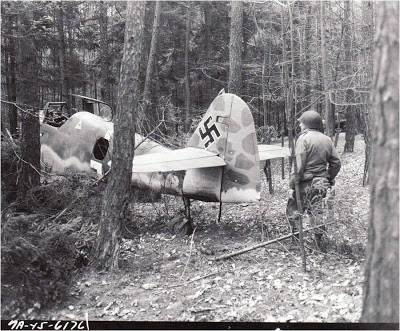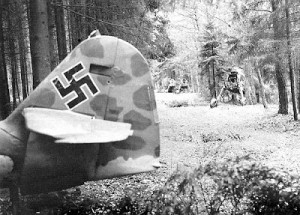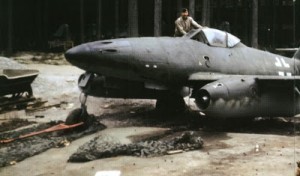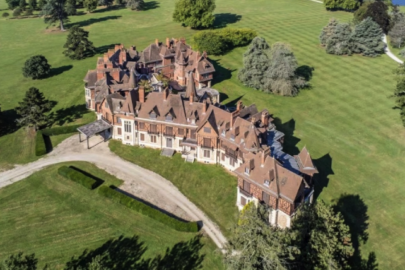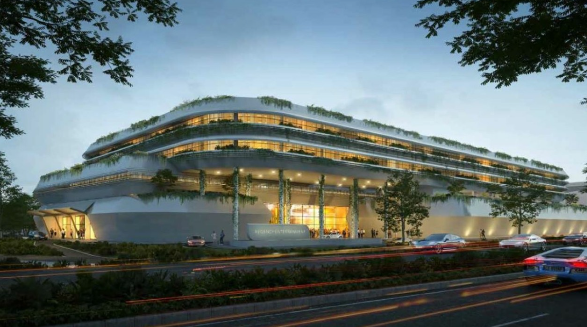The field of German late war production is a fascinating aspect of Luftwaffe history – from underground facilities such as mines or tunnels to so-called “Waldwerke” – literally ‘forest factories’. Examples of these were the KUNO I Waldwerk set up to turn out Me 262 jet fighters or the Cham-Michelsdorf site in northern Bavaria which produced the latest Bf 109 K fighters. Allied bombing raids starting early in 1944 with ‘Big Week’ set about dislocating aircraft and aero engine production. At their Augsburg and Regensburg plants Messerschmitt quickly organised the ‘relocation’ and ‘dispersal’ of some of their manufacturing capacity.
Kuno I was one such ‘plant’ established in pine forests in the vicinity of Leipheim. Issue 16 of ‘Luftwaffe in Focus’ gives a description of the production ‘facilities’ in the KUNO I Waldwerk set up to turn out the Me 262. So-called Waldwerke usually comprised a production line set up on a long forest road, so-called “Holzrückewege”. Concentration camp internees – production line workers – would be housed in wooden barracks alongside the ‘production line’. Paint shops and compass platforms were all built under cover with various airframe components arriving at different points along the ‘road’ for final assembly. On completion airframes were towed out of the forests onto a stretch of the nearby A8 Stuttgart – München Autobahn comprising a two kilometre long straight which was also camouflaged with green paint from where the freshly turned out Me 262s were flown off to Memmingen or Leipheim to be handed over to the Luftwaffe. With dispersed facilities under heavy cover, the KUNO forest complex was turning out five completed Me 262s per day from late April 1944 in complete impunity from prowling American Jabos almost right up until the complex was captured by American troops on 21 April 1945. In fact Leipheim was heavily damaged on 28 April 1944, and no fewer than fifty Me 262s were written off, while KUNO I was untouched until a raid on 18 November 1944 caused slight damage, resulting in the setting up of KUNO II south of the original Kuno Waldwerk.
Messerschmitt also shifted production of other major types such as the Bf 109 K-4 into the dense pine woods in northern Bavaria, adhoc facilities manufacturing major assemblies such as wings and fuselages all under cover of dense foliage. Wings and fuselages would then be delivered usually by rail to final assembly plants. There were a number of known or no doubt some unknown Waldwerke in the area around Regensburg. The designations of the production sites are for the most part deliberately misleading. The records name the next larger town – little settlements with a railway station in most cases.
Mtt Flossenbürg is KZ Flossenbürg
Mtt Flossenbürg is Altenhammer
Mtt Vilseck is Heringnohe
Mtt Bodenwöhr is Mappach
Mtt Cham is Michelsdorf
Read the rest of this interesting article HERE

